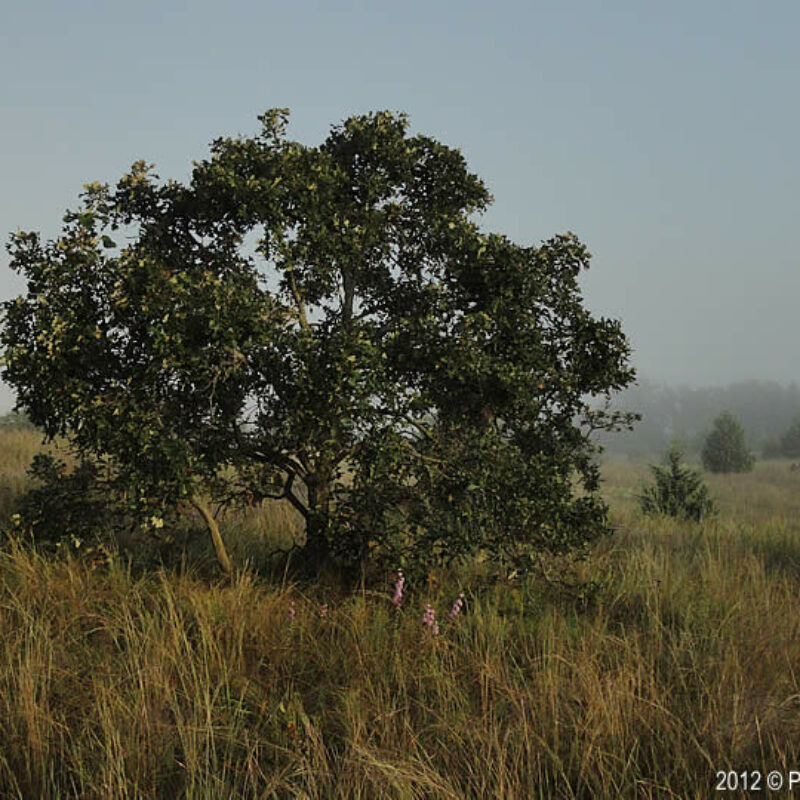Bur OakQuercus macrocarpa
A large, deciduous, majestic, native tree with a stout trunk and spreading branches. It has a broad, rounded, open crown and grows up to 80' tall. Bur Oak is suited for large landscapes of savanna restorations, shade and ornamental features. It can also be used in degraded sites and previously disturbed sites. When planting, give this tree plenty of room.
USDA symbol: QUMA2
General Information
| Plant Type | Tree |
|---|---|
| Height | 50 to 100 feet |
| Light Exposure | Sun, Part Sun |
| Soil Moisture | Dry, Medium |
| Bloom Color | Yellow |

Tolerances
| Flooding / Inundation Tolerance | High |
|---|---|
| General Resilience | 8 |
| Salt Tolerance | Low |
| Stress Tolerance | Drought Tolerant, Fire Tolerant |
Pollinator Value: Medium
| Bloom Months | April to May |
|---|---|
| Larval Host of | Butterflies, Moths |
| Specific Pollinators Hosted | Cameraria hamadryadella, Erynnis brizo, Erynnis horatius, Erynnis juvenalis, Satyrium edwardsii |
Project Planning
| Project Type | Erosion Control, Restoration, Upland Buffer |
|---|---|
| Coefficient of Conservatism | 4 |
| Herbivore Sensitivity | Medium |
| Lifespan | Perennial |
| Rate of Spread | Slow |
| Soil Stabilization | Deep |
| Vegetative Reproduction | Clonal |
Range
| County | Aitkin, Anoka, Becker, Beltrami, Benton, Big Stone, Blue Earth, Brown, Carlton, Carver, Cass, Chippewa, Chisago, Clay, Clearwater, Cook, Cottonwood, Crow Wing, Dakota, Dodge, Douglas, Faribault, Fillmore, Freeborn, Goodhue, Grant, Hennepin, Houston, Hubbard, Isanti, Itasca, Jackson, Kandiyohi, Kittson, Koochiching, Lac qui Parle, Lake, Lake of the Woods, Le Sueur, Lincoln, Lyon, Mahnomen, Marshall, Martin, McLeod, Meeker, Mille Lacs, Morrison, Mower, Murray, Nicollet, Nobles, Norman, Olmsted, Otter Tail, Pennington, Pine, Pipestone, Polk, Pope, Ramsey, Red Lake, Redwood, Renville, Rice, Rock, Roseau, Sherburne, Sibley, St. Louis, Stearns, Steele, Stevens, Swift, Todd, Traverse, Wabasha, Wadena, Waseca, Washington, Watonwan, Wilkin, Winona, Wright, Yellow Medicine |
|---|---|
| Ecoregion | Driftless Area, Lake Agassiz Plain, North Central Hardwood Forests, Northern Glaciated Plains, Northern Lakes and Forests, Northern Minnesota Wetlands, Western Cornbelt Plains |
| Approximate Eco Province | Eastern Broadleaf Forest, Laurentian Mixed Forest, Prairie Parkland, Tallgrass Aspen Parklands |
